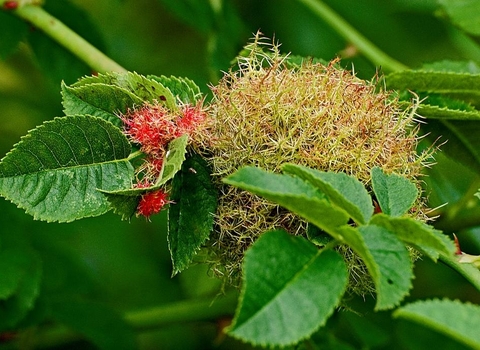
©Les Binns
Robin's pincushion
Living up to its name, the Robin's pincushion is a red, round, hairy growth that can be seen on wild roses. It is caused by the larvae of a tiny gall wasp that feeds on the host plant, but causes little damage.
Enw gwyddonol
Diplolepis rosaePryd i'w gweld
January to DecemberSpecies information
Category
Ystadegau
Diameter of gall: 2.5cmCommon.
